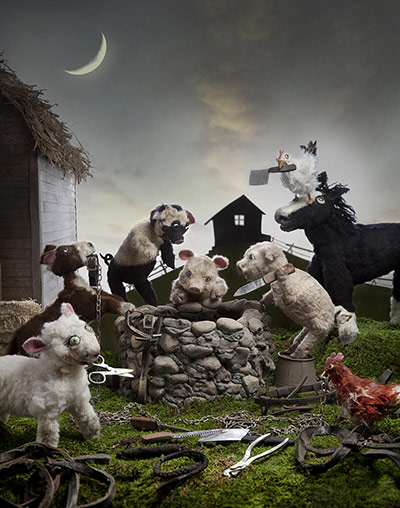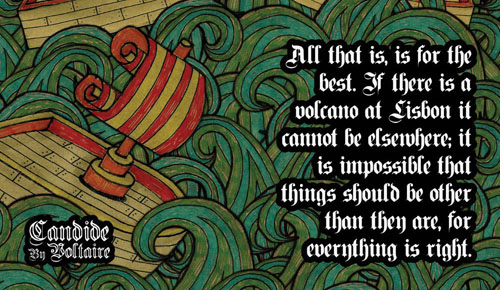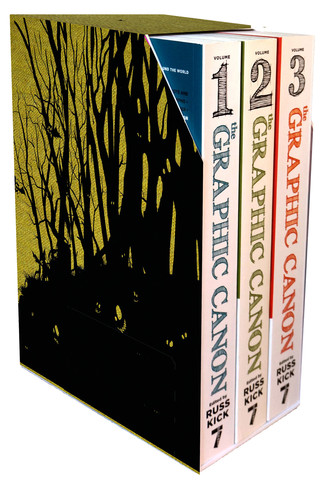More than a decade before Julian Assange and Edward Snowden became poster boys for information freedom, Russ Kick was a pioneer of using the Internet to heighten government accountability. If you’ve seen the video of then president George W. Bush reading “The Pet Goat” with a second-grade class in Sarasota, Florida, as terrorist attacks were underway on September 11, 2001, you can thank Kick for posting an uncut version of the footage on the web.
While he was an editor at the Disinformation Company, an online publisher of “the most shocking, unusual, and quirkiest news articles, podcasts, and videos,” Kick produced a number of anthologies that exposed untruths and challenged conventional wisdom. His most popular collections are Everything You Know Is Wrong and You Are Being Lied To. When a decade of media-based, information-freedom advocacy began to take its toll on his well-being, Kick knew it was time for him to switch gears.
While visiting a bookstore in Tucson, Arizona, Kick’s chance encounter with a graphic novel sparked a new direction. For the last three and a half years, he has been working with comic artists to reimagine classic works of literature, philosophy, and religion for a three-volume collection called The Graphic Canon. This summer, the final volume was released (the first and second volumes were released last year), and the trilogy will be available as a box set in October.
I spoke with Kick about how going in a new direction can be both daunting and gratifying, and why his current project adapting children’s stories is unsuitable for kids.
Part of what makes The Graphic Canon intriguing is that it does two things at once: elevates comic art while making classic literature more accessible to contemporary audiences. What led you to take on this ambitious project?
It was so depressing to produce these sociopolitical books, but I knew I wanted to keep writing and editing anthologies. So, I returned to some of my other lifelong interests: literature and art. One day I was in was in the graphic-novel section of a bookstore in Tucson and found a full-length, graphic adaptation of The Trial by Kafka. It struck me that there should be an anthology of graphic adaptations of classic works of literature. I thought it should be like The Norton Anthology I had dragged around in college. That was the moment the idea was born, and it seemed so obvious to me once I had it.
When did you become interested in graphic novels?
I’ve read comics all my life. Once I signed the contract with Seven Stories Press, I started approaching my favorite artists to ask them to be a part of this project. Then I branched out from there. One of the most fun parts of working on The Graphic Canon was discovering new talent. It is unbelievable how many talented illustrators and comic artists are out there. It was great to find people who are essentially unknown and give them the opportunity to be part of this collection.

Reinterpreting iconic works of literature must be intimidating, and some of the chapters are closer renderings than others. Did you feel a responsibility to maintain these works’ original forms?
Because this is an art project, I started out by making the decision not to place limits on what the artist could do. I wanted the result to be a real collaboration between the original writer, their work, and the artist. By giving talented artists the greatest source material possible, I knew the result would be amazing.
A part of editing an anthology is learning to let go of control. It’s a process of chance and synchronicity. Some things you want at the start never materialize, and you end up with other things you’d never even considered that are just brilliant. It’s like looking into a kaleidoscope; what you see is always unpredictable yet interesting.
The Graphic Canon isn’t just works of literature. You also include philosophical writings from people like Sigmund Freud and Friedrich Nietzsche and excerpts from religious texts. How did you decide what to include as “the canon?”
I started with a list of what I considered to be the most critical works of literature. These were stories that would leave a noticeable gap if they weren’t included, like The Iliad, The Odyssey, Dante’s Inferno, The Adventures of Huckleberry Finn, and The Tale of Genji. But I also wanted to go beyond what was predictable and bring in unexpected things. That’s why I included the Incan play Apu Ollantay.
I also had a wish list of things I wanted to see adapted because I thought the story would work really well visually. Some of the artists I worked with told me they’d always wanted to adapt a certain work, but they never had a reason to do it. That’s what happened with Rebecca Dart and Paradise Lost, which are these stunning full-page illustrations and beautiful hand-lettering. It also happened with Rick Geary and the book of Revelation. Being a part of this project gave those artists the excuse they needed.

There’s a lot of diversity in the collection, stylistically and in how the artist approached the material. Some adaptations are straightforward and use the original text, while others are more abstract interpretations of a partial or whole work. What does this diversity bring to the collection as a whole?
People have told me they were pleasantly surprised with The Graphic Canon because it is so multilayered and features so many different artistic styles. A few times while I was editing, I was surprised when an artist brought something out of a story that I’d never noticed before. Even though some of these works are hundreds of years old, they still have really relevant things to say. The themes are so timeless and universal, and the artwork helps to get that across.
Every chapter begins with an introduction you penned that serves to contextualize the work and familiarize the reader with the comic artist. What did you learn by writing those introductions?
Too many amazing writers and poets died in total poverty, and only gained recognition for their work posthumously. In the chapter introductions, I talk about why the work is important and give some interesting facts about the writer or poet and the history of the work, to humanize it. A lot of times the backstory of a writer’s life and career is as interesting as the work itself. There are a lot of fascinating stories about pieces that were either completely ignored during a writer’s lifetime or torn to pieces by critics when it was published. I almost got tired of having to write that again and again. But it did teach me to never give up hope.
You mention the possibility of a fourth volume a couple of times in The Graphic Canon. Is that something you have in the works?
I am working on another anthology right now, but it won’t be a fourth volume. It will be graphic adaptations of children’s literature. Originally, the publisher and I thought this would be a book for children and adults, but now that the artwork has started coming in, I realize the book isn’t going to be appropriate for kids. It’s well known that a lot of what we consider to be children’s stories are really dark and violent, so you can imagine how the artwork might be disturbing. The artists and I won’t be watering these stories down like they do at Disney.
Mandy Van Deven Mandy Van Deven was previously In The Fray’s managing editor. Site: mandyvandeven.com | Twitter: @mandyvandeven
- Follow us on Twitter: @inthefray
- Comment on stories or like us on Facebook
- Subscribe to our free email newsletter
- Send us your writing, photography, or artwork
- Republish our Creative Commons-licensed content


